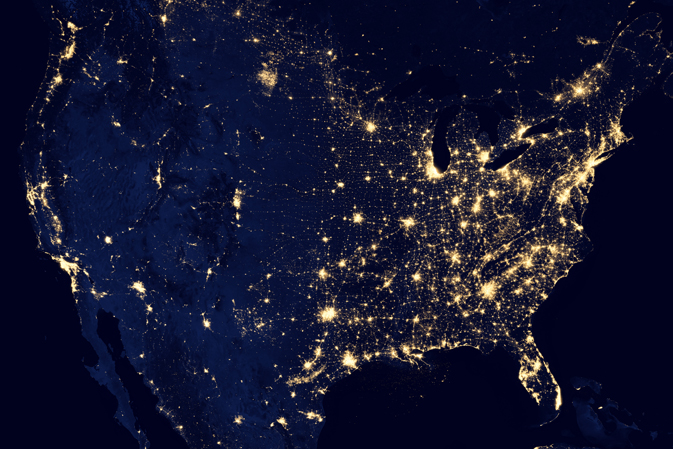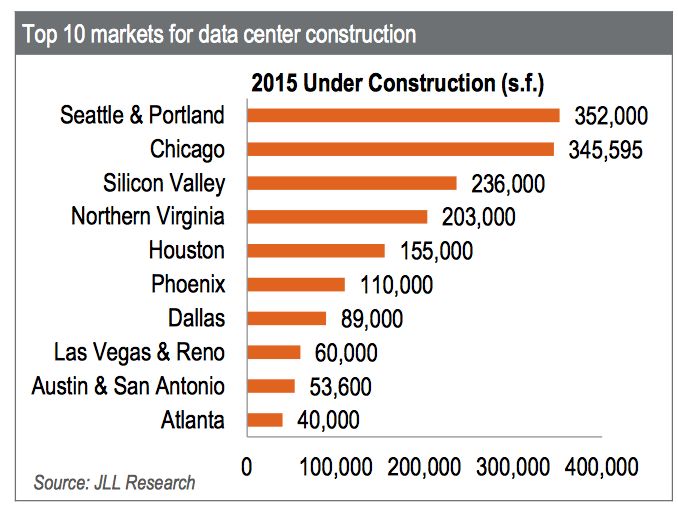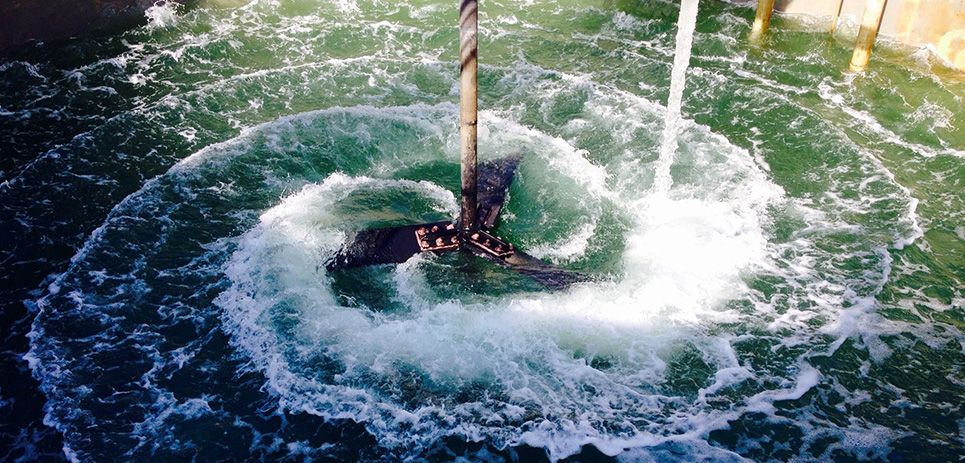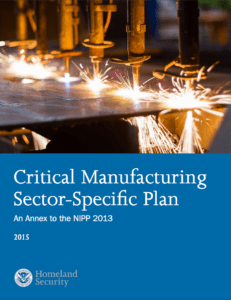Insight
Published and updated
America’s Crumbling Critical Infrastructure Part 2
As promised in America’s Crumbling Infrastructure Part 1: Transportation, we’re back to explore the state of our critical infrastructure sectors. Some observations before we examine energy, communications, water and manufacturing infrastructure:
- Cyber attacks are a menace to critical infrastructure. Technology’s great, but for all the ways it helps us advance infrastructure, it opens a Pandora’s Box of hacking vulnerability. Our dependency on infrastructure makes it a valuable target.
- Money alone won’t fix it all. Much of the critical infrastructure recovery debate revolves around funding. Even if we could just cut the $3.6 trillion check that the ASCE says is needed to modernize our infrastructure, we’d be back in the same boat very quickly. Pipes age. Technology evolves. Population grows. We need investment in innovation as well as maintenance. There’s a good reason we’re not covering overgrown wagon routes or lamp oil supply deficits in this article.
- Infrastructure depends on infrastructure. Without roads or rail, there would be no manufacturing. Without communication there may be no energy. Without water, there may be no humans. But infrastructure can also help infrastructure. Add a commuter rail to relieve the roadway burden. Improve renewable energy storage to reduce the funds needed to add and repair pipelines. Watch manufacturing improve as maritime transportation safely expands to expedite raw materials shipping.
Let’s dig into four more sectors of critical infrastructure.
Energy (ASCE GRADE: D+)

Why is it critical? Energy critical infrastructure includes sources and transmission of electricity, fossil (oil, coal and natural gas), nuclear and renewable (wind, solar, geothermal and hydropower) energy. Presidential Policy Directive-21 identifies energy (and communication) infrastructure as “uniquely critical due to the enabling functions they provide across all other critical infrastructures.”
According to the Department of Homeland Security, America’s energy infrastructure includes:
- 6,413 power plants
- 1,075 gigawatts of installed generation (Doc Brown needed just 0.001 percent of that to send the Delorean back to 1985)
- 400,000 miles of electric transmission lines
- 150,000 miles of crude oil and product pipelines
- 1,500,000 miles of natural gas pipelines
What are the signs of crumbling? Volatile markets, rate increases and unplanned outages are the most obvious signs. Dig a bit deeper, and you’ll discover that some of the electrical grid and pipeline systems originated in the 1880s. Increases in population, technological and industrial demands, and globalization are straining 130-year-old infrastructure. Energy critical infrastructure is vulnerable to effects from climate change and terrorist attacks, and requires massive modernization to transmit energy from production facilities to consumers.
What’s being done to repair it? About 17,000 circuit miles of electricity transmission lines are planned, but public resistance slows the permitting and siting of new lines. The Electricity Delivery and Energy Reliability budget, which is used to modernize energy infrastructure, receives a greater allocation each year. Up 39.8% from 2015 to 2016, the Fiscal Year 2017 request is another 27.3% higher (DOE FY 2017 Congressional Budget Request). Computerizing the electric utility grid (smart grid) introduced automation, remote control and new levels of efficiency in electricity transmission. It also made the grid more vulnerable to cyber attacks. The National Renewable Energy Laboratory, among other organizations, continues to advance methods of identifying vulnerabilities and protecting against intrusion.
Communications (No ASCE Grade)

Why is it critical? As I mentioned earlier, communication and energy are uniquely critical because of their “enabling functions” across all critical infrastructures. Without voice and data communication over terrestrial, satellite and wireless transmission systems, we’re all dead in the water. From financial transactions to emergency services to sending an email to calling the pizza guy, all of it depends on communications critical infrastructure.
What are the signs of crumbling? We still use some of the same infrastructure from 1830s-era Morse Code. Dots and dashes gave way to 1s and 0s in the 1990s, and we’ve been playing catch up ever since. Consumers crave connectivity. The proliferation of satellites, data centers and fiber optics brings new vulnerabilities to cyber attacks such as those on a National Oceanic and Atmospheric Administration satellite in 2014 and Pentagon social media accounts in 2015. Sabotage is also a growing concern as evidenced by the attempt to sever fiber optic cables in Livermore, California in 2015.

What’s being done to repair it? The private sector is primarily responsible for communications critical infrastructure. There’s some federal funding, and, of course, heaps of federal regulation, but this sector isn’t nearly as dependent on federal dollars as other sectors. In fact, unlike other sectors, the issue with communication isn’t so much repair of existing infrastructure as it is expanding new infrastructure quickly enough. Having a data center built in your area is akin to winning the economic driver lottery. Fiber optic cable market forecasts are as high as $3 billion by 2019. Communication satellites launch in pairs on the backs of drone rockets.
Water and Wastewater Systems (ASCE Grades: D)

Why is it critical? Safe drinking water keeps us alive and properly treated wastewater prevents disease and protects the environment. There are approximately 153,000 public drinking water systems and 16,000 wastewater treatment systems in the U.S. Under the watch of the Environmental Protection Agency (EPA), there’s an ongoing struggle to keep our sewage from infiltrating our drinking water.
What are the signs of crumbling? According to a 2014 NPR story, each year 2.1 trillion gallons of purified drinking water leaks out of an infrastructure that dates back a hundred years. There are about 240,000 water main breaks per year in the U.S. The EPA estimates that 4,000 to 5,000 miles of mains are replaced annually. That’s projected to peak in 2035 at up to 20,000 miles per year. The American Water Works Association (AWWA) estimates that it will take $1.7 trillion to safely grow and maintain buried drinking water critical infrastructure through 2050.
One of the biggest problems with wastewater critical infrastructure is the havoc caused by combined sewer overflows (CSOs). Located in nearly 860 U.S. municipalities, CSOs collect rainwater runoff, domestic sewage and industrial wastewater into one pipe. Under normal conditions, that sludge gets routed through a treatment plant and then safely discharged into a body of water. But when the CSO is over capacity, that untreated sludge seeps into whatever bodies of water wait at the end of the gravitational flow. This results in a decimated water supply unfit for fish, humans or our crops.
What’s being done to repair it? In 2014, the Safe Drinking Water Act allotted more than $906 million in federal funds. And beyond government funding comes your water bill. However, water utilities don’t get paid for those 2.1 trillion gallons that go down the drain every year. Between those losses and the forecasted need for infrastructure growth, expect your water bill to go up.
The EPA and U.S. Department of Justice are working to eliminate CSOs, requiring cities to invest $15 billion in other solutions. Unfortunately, the EPA estimated in the 2008 Clean Watersheds Needs Survey that it needs $64 billion to fully correct CSOs. Even if a generous benefactor hands over the $49 billion difference, we still have to deal with wastewater treatment and stormwater management shortfalls.
Manufacturing (No ASCE Grade)
Why is it critical? About five years ago, Jeep had an ad campaign with the tagline, “The Things We Make, Make Us.” That same tagline could apply to the Critical Manufacturing Sector under the protection of the Department of Homeland Security. According to the DHS fact sheet for the sector, “A major failure or disruption in the sector could result in significant national economic impact and lengthy disruptions that cascade across multiple critical infrastructure sectors or regions.”
What are the signs of crumbling? Critical manufacturing infrastructure is a bit different than the other sectors we’ve talked about so far. Difficulties in manufacturing stem from supply chain interruptions that result from geopolitical conflicts, man-made and natural disasters, and crumbling infrastructure in other sectors. For example, manufacturers depend on waterways, roads, airlines and railroads to receive and ship raw materials. So in a way, as the road crumbles, so does a portion of manufacturing.

The DHS Critical Manufacturing Sector-Specific Plan spells out five significant risks to manufacturing:
- Natural disasters and extreme weather: Globally dispersed suppliers expose manufacturers to more risk.
- Supply chain disruptions: Lean manufacturing trends and “just-in-time” delivery make for a tight margin of error.
- Global political and social implications: Again, globalization exposes manufacturers to radicalism, unstable economies and people that just don’t like the U.S.
- Deliberate attacks and terrorism: From a strategic standpoint, an extremist group targeting a manufacturing facility could cause mass casualties while also disrupting goods production.
- Cyber attacks: Digital industrial control systems and the growing popularity of the Internet of Things (IoT) provide more points of access to hackers.
What’s being done to repair it? “The success of manufacturing still depends on transportation,” wrote Rosabeth Moss Kanter in The Wall Street Journal.
Uh-oh.
Here’s a refresher on the state of our transportation infrastructure. Ports are in the best shape with an ASCE grade of “C.”
Beside being subject to the infrastructure woes of other sectors, protecting manufacturing infrastructure has become an IT problem. Some manufacturers implement systems that monitor material flow throughout their supply chain to more quickly identify issues related to man-made or natural disasters. For cybersecurity help, manufacturers can turn to the National Institute of Standards and Technology’s (NIST) “Framework for Improving Critical Infrastructure Cybersecurity” as a guide for implementing cyber risk management.
There’s Still More Critical Infrastructure!
We’ll cover nuclear security, schools, solid waste, and food and agriculture in part three of this series. Turns out it takes a lot of infrastructure to run a modern society these days.